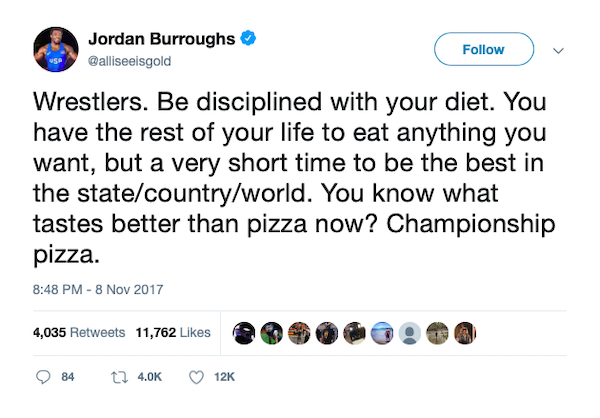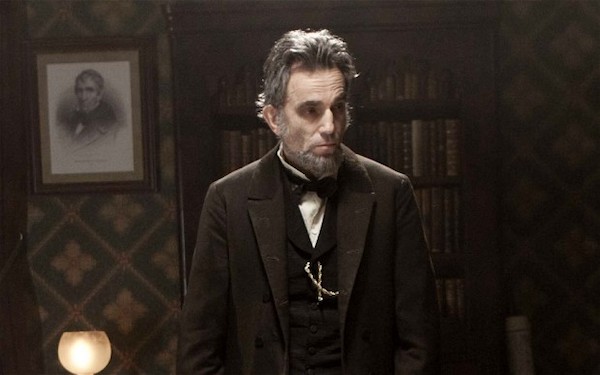Monday January 6th 2020
One of my favourite things to do during the holidays is to watch sports. With two weeks to more less myself, I love watching the World Junior Hockey Championships, the Spengler Cup and the English Premier League as games come fast and furious and there isn’t a shortage of things to watch which is a perfect way to relax after a stressful year.

The Christmas season brings a flurry of games in the EPL (Photo property of the Bleacher Report)
I like hockey in particular because it’s so ingrained into our Canadian consciousness and there isn’t a Canadian who doesn’t have an opinion on their favourite team and what they could do to be better. I think the other reason why I like it, is that it’s so different from wrestling. Team sports versus individual sports have so many differences and it’s hard to jump from one to another as both a coach and athlete.
Having coached high school soccer and futsal has made me come to the appreciation of the differences and difficulty of coaching team versus individual sports. As a result, soccer along with hockey has become one of my favourite team sports to watch.

This year’s WJHC was full of interesting narratives (Photo Property of CTV News)
So how does this relate to a blog that talks about wrestling? Well, the connection to this blog is somewhat circuitous as when I write these blogs, I take what seems either relevant to me at the time or what catches my interest. In this case, coming back to the example of hockey, it was the firing of Toronto Maple Leafs coach Mike Babcock that got me thinking about the topic for this blog.
Babcock was released by the Maple Leafs after the team went through a losing streak which was exacerbated by rumours that he had “lost the room”. Upon his dismissal, allegations came up not only from the current Maple Leafs roster, but teams in the past of Babcock’s verbal and psychological abuse towards various players. These allegations, while disturbing got me thinking of coaches and their methods used to push athletes.
I wrote a blog two years ago about pushing athletes. In the blog, I mentioned that there has to be a delicate balance between pushing athletes to their limits and exceeding them. I also wrote that some of the greatest coaches of all time were considered tyrants which might be considered abusive by today’s standards. To be fair, the coaches that I mentioned in that blog were never outed as being abusive but merely tough. Babcock’s methods seen with the lens of the modern era, would be considered abusive. In a different era, Babcock would also be considered tough, with his methods justified in that the sole purpose was trying to get his athletes to be at their best in order to win. The word abusive would not be used or even hinted at in this particular context.

Mike Babcock with the Detroit Red Wings (Photo property of the Bullemule.wordpress.com)
Now let me be clear, if the allegations against Babcock prove to be true and that some of his methods were abusive, then nothing in the world should justify that. Athletes need to be pushed to their limits but not at the cost of their dignity. If the line of being tough was crossed to the point of abuse, then it’s obvious that his athletes would stop responding. Athletes need to be encouraged, especially these days and may not even respond well to the tough approach that was so popular among coaches of yesteryear. Since most of my coaching involves working with younger athletes, I’ve been very aware of this, as my style has had to evolve in order to deal with the changing nature of my athletes as the years go by.
As the level of competition goes up, so do expectations. The difficulty of sport also increases as athletes are expected to perform faster and better. This is why high-performance athletes are few and far between as many young athletes either don’t have the skill or the fortitude to advance to the next level. This is especially true of professional athletes as millions of dollars are invested in professional sports, with expectations being even higher.
So, getting back to Babcock, the article of his dismissal got me thinking that while some of his methods were clearly abusive, how much of it was him being “tough” and just trying to get his athletes to be their best all the time? Articles, if they want to, can convey a certain narrative and it’s hard to come to an absolute truth without extensive research. So, were all of Babcock’s methods abusive? What were some of his other methods of him being tough but not abusive, that caused some discomfort to his athletes? Sometimes to be the best, you can’t always do what makes you comfortable. The reason why there are people that are the best in their field is because they’re willing to do things that other people aren’t. These are the people that put themselves in uncomfortable situations and push through them.
I remember reading a tweet from World and Olympic Champion Jordan Burroughs about being disciplined about his diet during his competitive career. He implied that by eating whatever he wanted to, it made making weight so much harder. The sacrifice of not eating his favourite foods was worth it in order to be the best.

@alliseeisgold
It’s not just athletes that are willing to go to extreme for their craft, actors are notorious for this as well. Daniel Day Lewis considered to be one of the greatest actors of this generation is almost fanatical in selecting and preparing for his roles. He meticulously researches every aspect of the role he’s about to play, immersing himself in every aspect of his character’s life, leaving nothing out. In his portrayal of Abraham Lincoln (Lewis’ last role which won him another Oscar), he once again did extensive research before principle filming had begun. Before, during and even a little bit after principle filming had ended, Lewis never broke character throughout the whole process, even during his personal time. To craft his character, he had to truly inhabit it, which probably made his family as well as himself, pretty uncomfortable. Lewis, an actor at the top of his game does whatever it takes to maintain that standard of excellence.

Daniel Day Lewis in an Oscar winning performance (Photo property of the Telegraph.co.uk)
With that being said, getting the best out of your athletes may not always be easy and sometimes requires some forceful methods. The question though is how much is too much? More and more we see that many people are opposed to tough coaches and tough coaching styles. Everyone wants the coach to be their friend so that they can have fun. This may work well with recreational athletes but should not be the same with high-performance ones. And yet, we see this focus being changed as pro athletes just want to have fun as well. It got me thinking that whenever we read that a coach has been fired because he’s “lost the room”, is it because these athletes, who have grown up with this emphasis of participation and having fun, just can’t deal with pressure of doing whatever it takes in order to win?
After all, they get paid their millions regardless of whether they win or not so why do what it takes, even if it’s uncomfortable, in order to be the best? One could argue that professional athletes are competing for their jobs and that this high pressure will get them to play to their full potential as they jockey for longer and better contracts. If this is the case, then they shouldn’t need coaches at this level since they’re fully autonomous and will always play to their full potential. Clearly this isn’t the case as some professional athletes will put in the work and more, and some will never achieve their full potential.
Coaches see things from different perspectives. Athletes will say one thing that may contradict a coach because they do not see the complete picture. An athlete may think that they’re putting in their best but as coaches we may see that they could put in a little bit more. This is especially true of younger athletes. That’s why we have coaches, to be able point out our mistakes, to push us and make us be the best we can possibly be.
So, with that being said, I firmly believe in moving forward that coaches need to balance some aspects of the old methods and the new. Coaches need to push their athletes, which may not always be comfortable for them. This has to be done while all the time being aware that many athletes can’t deal with this pressure due to the fact that they’re unused to it. They should also do it in measured burst when they’re younger so that if they move to the next level, they’re used to it. In other words, coaches should still be tough with their athletes but not all the time. Obviously, this can’t be done with every athlete as some are not destined to become high performance athletes and will not be able to handle it. The onus would have to be on the coach in order to recognize that, and that all athletes won’t respond to this cookie cutter approach.
Being tough will better prepare athletes for life after sports as we constantly hear that anxiety, particularly amongst young people is on the rise. Many articles that I’ve read said that high performance athletes who had tough coaches throughout their careers, responded better as an aggregate to difficult situations then people who weren’t exposed to that sort of pressure. In turn many athletes credit these tougher coaches in helping to achieve more in life. Such was the case of Pat Sumitt, coach of the Tennessee Lady Volunteers and the winningest coach in NCAA Division Women’s Basketball. She demanded much and in turn her athletes were better for it.

In addition to this, I think that coaches who can still be tough, but at the same time communicate with the current generation of athletes should be applauded. They’ve managed to keep their principles intact while at the same time being able to reach this current generation of athletes. While doing so, they’ve undoubtedly faced lots of criticism and backlash from athletes, parents and society at large, which is never easy. I think that so long as you’re tough but fair, while at the same time being able to juggle all the current issues of training athletes in the 21st century, then you maintain a balance of old coaching methods while implementing new philosophies. And in the end, your athletes will be that much better for it.
